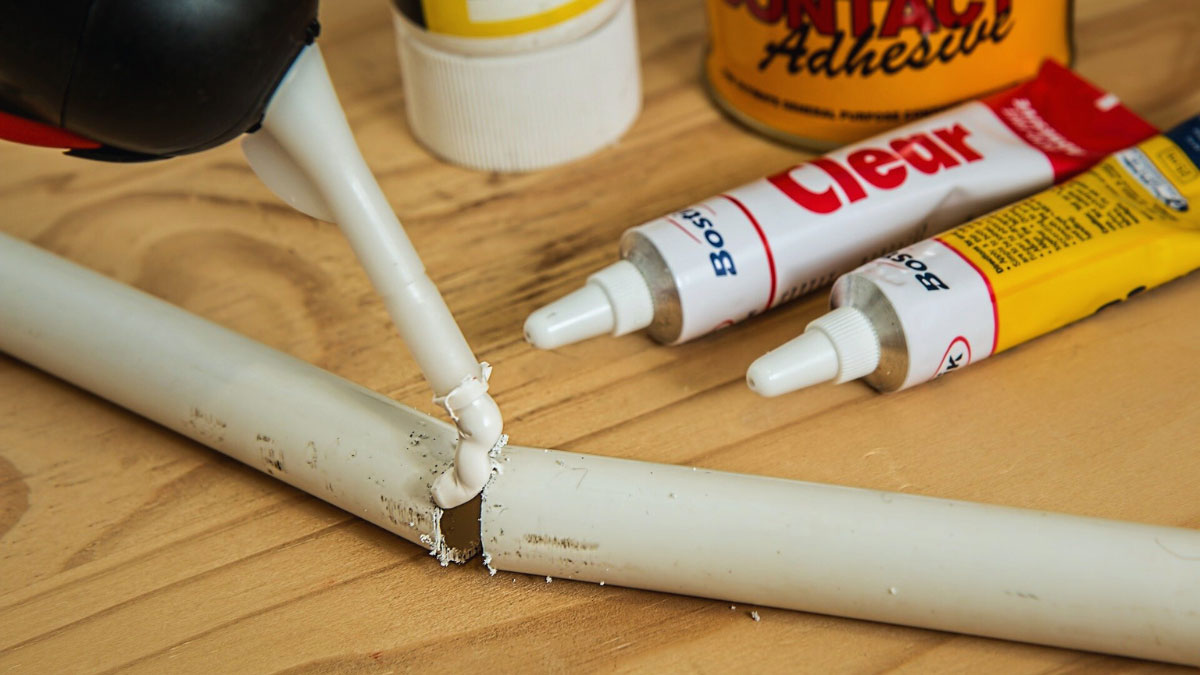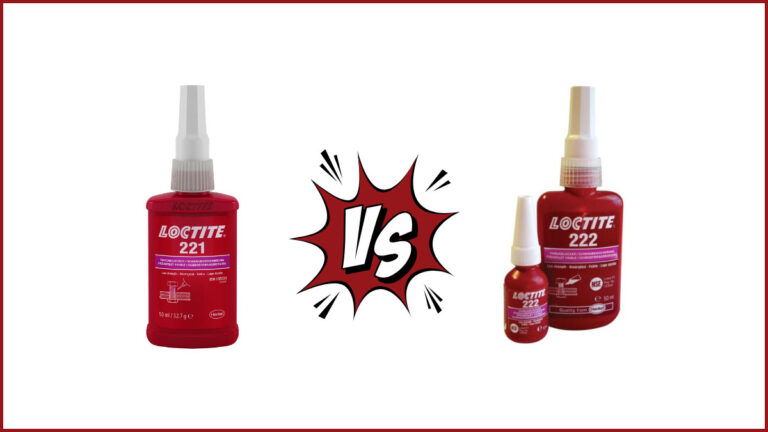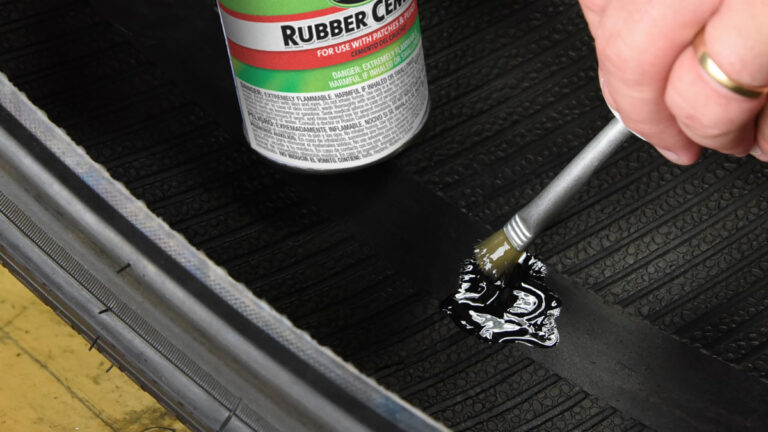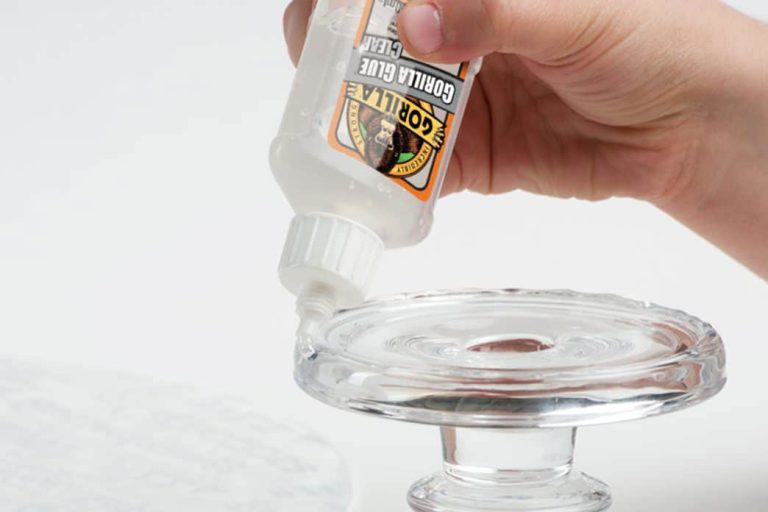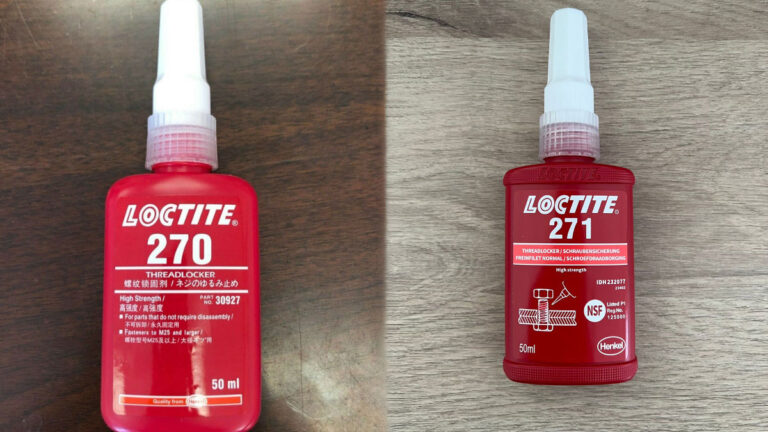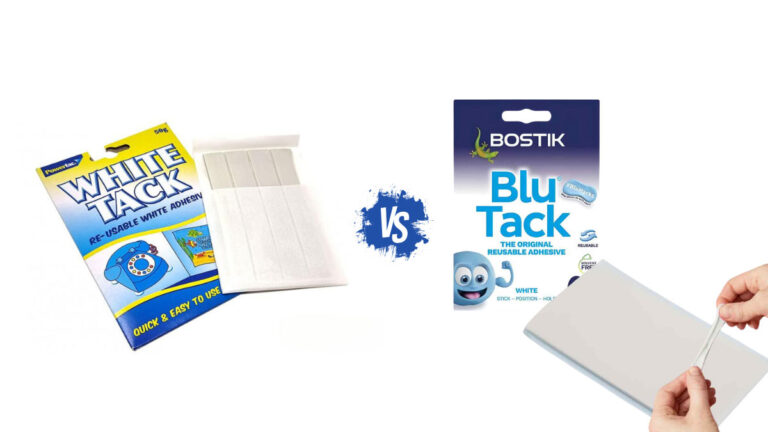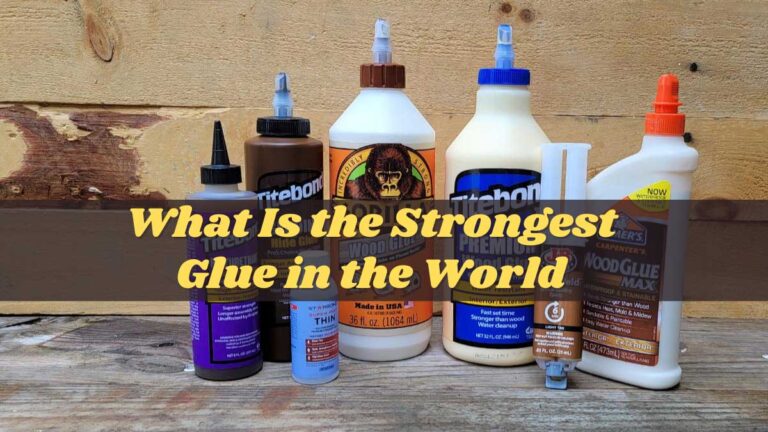Super Glue Not Working on Plastic: Tips for Better Adhesion
Ever tried to fix a broken plastic item with super glue, only to find it doesn’t stick? You’re not alone. Many people encounter this frustrating issue, and it’s more common than you might think.
Plastic can be notoriously tricky for super glue to bond with due to its smooth, non-porous surface. Understanding why super glue fails on plastic and discovering alternative solutions can save you time and effort. Let’s jump into the reasons behind this problem and explore effective ways to get your plastic repairs to hold strong.
Key Takeaways
- Super Glue Limitations on Plastic: Super glue often fails to bond effectively with plastic due to its smooth, non-porous surfaces and low surface tension, making it challenging to achieve a strong adhesive bond.
- Preparation is Key: Proper surface preparation, such as cleaning, scoring, or using adhesion promoters, is crucial for enhancing the bond between super glue and plastic materials.
- Consider Environmental Factors: Factors like temperature, humidity, and cleanliness greatly influence adhesive performance. Ensuring optimal conditions can improve bonding outcomes.
- Explore Alternative Adhesives: When super glue isn’t effective, specialized plastic adhesives like solvent-based glues, epoxy resins, and polyurethane adhesives offer better bonding properties for various plastics.
- Effective Bonding Techniques: Techniques such as surface roughening, chemical etching, and using primers can significantly enhance adhesion. Additionally, methods like applying baking soda with super glue can improve bond strength.
Understanding Why Super Glue Fails on Plastic
Super glue often struggles to bond with plastic materials, leaving you with a weak or temporary fix. This section delves into why super glue doesn’t work well on plastic and explores common issues and types of plastic that resist adhesive bonding.
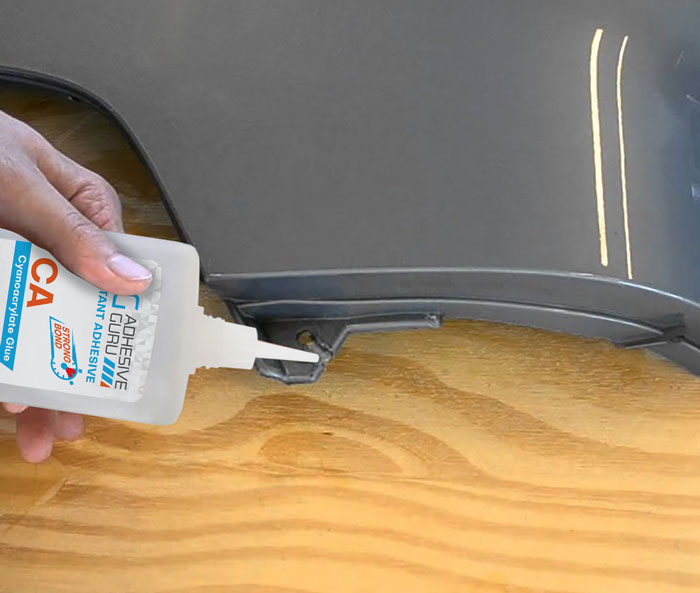
Common Issues with Super Glue and Plastic
Surface Tension and Molecular Structure:
- Smooth and Non-Absorbent Surfaces: Most plastics like polyethylene and polypropylene have smooth surfaces, making it difficult for the glue to adhere.
- Low Surface Tension: The molecular structure of these plastics lacks the surface tension needed for a strong bond, often requiring additional preparation.
Lack of Surface Preparation:
- Insufficient Bonding: Simply applying super glue won’t suffice for many plastics. Preparation such as scoring or using an adhesion promoter is necessary.
Incompatibility with Certain Plastics:
- Resistance in Specific Plastics: Plastics such as HDPE (High-Density Polyethylene) are particularly resistant to adhesives, including super glue.
Types of Plastic That Resist Super Glue
Various plastics resist adhesive bonding due to their unique properties. The table below details some common plastics and their characteristics that hinder super glue’s effectiveness.
| Plastic Type | Properties That Hinder Bonding | Common Use Cases |
|---|---|---|
| Polyethylene | Non-absorbent, smooth surface | Grocery bags, bottles, toys |
| Polypropylene | Low surface tension, chemical resistance | Food containers, automotive parts |
| Polyurethane | Flexible, smooth surface | Foam products, wheels, hoses |
| Acrylics | High molecular weight, smooth finish | Windows, display cases, signage |
| HDPE | High-density, waxy surface | Piping, milk jugs, plastic lumber |
When working with these plastics, you may need to explore alternative adhesives or additional surface preparation methods to achieve a strong bond.
Factors Affecting Adhesion
When super glue doesn’t adhere to plastic, several factors could be at play. Understanding these variables helps in troubleshooting and finding effective solutions.
Surface Energy of Plastics
Plastic surfaces often have low surface energy, hindering adhesive bonding. Surface energy influences how well adhesives wet the surface.
Key Variables:
- Smooth Surface: Plastics usually have smooth, non-porous textures, making it hard for adhesives to penetrate and bond.
- Molecular Structure: Various plastics (e.g., polyethylene, polypropylene, nylon) have distinct molecular compositions. For instance, HDPE (High-Density Polyethylene) resists most adhesives due to its specific structure.
- Priming: Utilizing adhesion promoters, such as Poly Prep, enhances surface energy. These primers etch the plastic’s surface at a molecular level, improving bonding.
Environmental Conditions
Environmental factors affect how super glue adheres to plastic. Conditions such as temperature, humidity, and cleanliness play crucial roles.
Key Conditions:
- Temperature: Adhesives have optimal temperature ranges. Extremely high or low temperatures can compromise the adhesive’s efficiency.
- Humidity: Moisture levels impact the curing process. High humidity might accelerate curing, while low humidity could slow it down.
- Cleanliness: Surface contaminants like dust, oil, or grease inhibit bonding. Cleaning the plastic thoroughly ensures maximum adhesion.
Addressing these variables maximizes the effectiveness of super glue on plastic surfaces. By preparing the plastic properly and considering environmental conditions, you enhance the chances of creating a strong, lasting bond.
Alternatives to Super Glue for Plastic
When super glue fails to bond plastic effectively, exploring other adhesives designed for plastic becomes essential. These alternatives ensure a strong bond, accommodating the unique characteristics of plastic materials.
Specialized Plastic Adhesives
Specialized plastic adhesives are formulated to address the bonding challenges posed by plastic surfaces. These adhesives create a strong bond by working specifically with the molecular structure of plastics.
Types of Specialized Plastic Adhesives:
- Solvent-Based Plastic Glues: These glues dissolve the surface of the plastic, allowing for a stronger bond. Ideal for polystyrene and ABS plastics.
- Epoxy Resins: Known for their strong bonding capabilities, epoxies work well on various plastics, including those resistant to super glue.
- Polyurethane Adhesives: Suitable for flexible and rigid plastics, these adhesives provide a durable and flexible bond.
Key Characteristics:
| Adhesive Type | Best For | Key Advantages |
|---|---|---|
| Solvent-Based Glue | Polystyrene, ABS | Strong bond via surface dissolving |
| Epoxy Resin | Various resistant plastics | High strength, versatility |
| Polyurethane Adhesive | Flexible and rigid plastics | Durable, flexible bond |
Using Adhesion Promoters
Adhesion promoters enhance the bonding of adhesives to plastic surfaces by modifying the surface energy of the plastic. These substances make the plastic surface more receptive to adhesives.
Steps for Using Adhesion Promoters:
- Clean the Surface: Ensure the plastic surface is free from dirt, grease, or oil.
- Apply the Adhesion Promoter: Evenly coat the plastic surface with the adhesion promoter.
- Allow to Dry: Give the promoter time to dry based on the manufacturer’s instructions.
- Use the Adhesive: Apply the chosen adhesive to the treated surface.
Key Advantages:
- Improves adhesion performance
- Reduces the need for extensive surface preparation
- Increases durability of the bond
| Adhesion Promoter | Application | Benefits |
|---|---|---|
| Primer for Plastics | Various plastics | Enhances bonding, easy application |
| Silane Coupling Agents | Composite materials, plastics | Used in industrial applications |
| Adhesion Promoter Sprays | General use | Quick application, boosts adhesion |
By choosing the right adhesive and employing adhesion promoters, you can achieve a strong, lasting bond on plastic surfaces. Proper preparation and selection of materials are crucial for effective plastic repair and assembly.
How to Properly Prepare Plastic Surfaces
Proper preparation of plastic surfaces is crucial for improving the bond when using super glue. Follow these steps to ensure better adhesion.
Cleaning the Surfaces
To ensure a strong bond, cleaning the plastic surfaces thoroughly is essential.
- Remove Contaminants: Use a mild detergent mixed with water to clean the plastic surfaces. This removes dirt, oils, and other contaminants that may hinder the adhesive bond. Rinse with clean water and dry completely.
- Use Isopropyl Alcohol: After cleaning with detergent and water, wipe the surfaces with isopropyl alcohol to remove any remaining residues. Allow it to evaporate fully to avoid leaving any moisture.
Using Primers and Promoters
Using specialized products like primers and bond promoters can significantly enhance adhesive performance on plastic.
- Primers: Primers help create a better surface for the adhesive to adhere to by increasing the surface energy of the plastic. Apply a thin layer of a primer designed for plastics and let it dry according to the manufacturer’s instructions.
- Adhesion Promoters: These products modify the plastic surface to improve the bond strength of the adhesive. Spray or brush a small amount of adhesion promoter on the plastic, ensuring even coverage. Let it dry before applying the super glue.
Priming Types and Their Specific Applications
| Primer Type | Application | Drying Time |
|---|---|---|
| Solvent-Based | For high-density plastics like HDPE | 5-10 minutes |
| Water-Based | For general-purpose plastic | 15-20 minutes |
| Promoter Type | Benefit | Application Method |
|---|---|---|
| Silane-Based | Enhances bond with non-polar plastics | Spray |
| Chlorinated Polyolefin | Bonds with difficult plastics (e.g., polypropylene) | Brush |
Following these steps and using the appropriate products will significantly increase the chances of achieving a strong and lasting bond when using super glue on plastic surfaces.
Tips for Successful Bonding
Overcoming the challenge of bonding super glue to plastic requires specific techniques. Understanding and applying these methods ensures a stronger, more reliable bond. Here are some techniques and expert advice to help you achieve successful plastic bonding.
Techniques for Different Types of Plastic
High-Density Polyethylene (HDPE)
HDPE is known for its resistance to adhesives. But, you can improve bonding with these techniques:
- Surface Roughening: Use sandpaper to roughen the plastic surface, increasing its ability to bond with the glue.
- Using a Primer: Apply a plastic primer to enhance the surface energy and help better adhesion.
Polypropylene (PP)
Similar to HDPE, polypropylene presents bonding challenges:
- Chemical Etching: Use a chemical etchant designed for plastics to alter the surface and improve glue adhesion.
- Flame Treatment: Carefully pass the plastic surface through a flame to modify its molecular structure, raising surface energy and enhancing bonding.
Polystyrene (PS)
Polystyrene offers better compatibility with super glue:
- Direct Application: Clean the surface with isopropyl alcohol, then apply super glue directly.
Expert Advice and Best Practices
Experts suggest several best practices to maximize bonding success:
- Surface Cleanliness: Always begin by cleaning the plastic surface with a mild detergent or isopropyl alcohol to remove grease, dust, and other contaminants.
- Proper Ventilation: Perform gluing in a well-ventilated area to avoid inhaling fumes and to ensure the adhesive cures correctly.
- Temperature Considerations: Work in an environment with moderate temperature (around 70°F) to optimize the adhesive’s performance.
- Compression: Apply consistent pressure to the bonded pieces to enhance the glue’s effectiveness while curing.
Practical Examples and Methods
Using Baking Soda
A practical method to enhance bonding with super glue:
- Method: Apply a layer of super glue to the plastic seam, then sprinkle baking soda over it.
- Effect: Baking soda acts as an accelerator, causing the glue to polymerize quickly. This creates a rough surface, improving the bond’s strength and making it manageable for detailed work.
| Adhesive Type | Suitable Plastics | Key Benefits | Example Applications |
|---|---|---|---|
| Super Glue (CA) | Polystyrene, ABS | Quick-drying, strong bond for small areas | Model building, minor repairs |
| Epoxy Resin | Most plastics | High strength, durable, gap-filling | Automotive repairs, DIY projects |
| Solvent-Based Glues | Acrylic, PVC | Dissolves material for strong bond | Plumbing, large plastic assemblies |
| Polyurethane Adhesive | Various plastics | Flexible, strong, resistant to moisture | Furniture repair, outdoor applications |
By understanding these techniques and applying expert advice, you can achieve successful bonding with super glue on various plastic types.
Conclusion
Exploring the challenges of bonding plastic with super glue requires understanding the unique properties of plastic surfaces. By preparing the surface properly and using the right adhesives or adhesion promoters, you can achieve a strong bond. Explore alternatives like specialized plastic adhesives and follow best practices for surface preparation to ensure successful results. With these strategies, you’ll be well-equipped to tackle plastic repair projects confidently and effectively.
Frequently Asked Questions
Why does super glue often fail to bond with plastic?
Super glue often fails to bond with plastic due to the smooth, non-porous surface of plastic, which makes adhesion difficult. Plastics like polyethylene and polypropylene have low surface tension and distinct molecular structures that resist bonding.
What can I do to improve the adhesion of super glue to plastic?
To improve adhesion, prepare the plastic surface by cleaning it thoroughly and roughening it with sandpaper. Using an adhesion promoter or primer can also enhance the surface energy and improve bonding.
Are there specific plastics that resist super glue more than others?
Yes, specific plastics like high-density polyethylene (HDPE) and polypropylene are particularly resistant to super glue due to their low surface energy and smooth textures.
What alternative adhesives work better for plastic than super glue?
Alternatives like solvent-based glues, epoxy resins, and polyurethane adhesives are formulated to bond more effectively with plastic surfaces. They offer specific applications and advantages over standard super glue.
How does surface energy affect the bonding of super glue to plastic?
Surface energy affects bonding as plastics with lower surface energy, such as polyethylene and polypropylene, make it challenging for adhesives to adhere properly. Increasing the surface energy through preparation techniques can enhance bonding.
What role do environmental conditions play in the effectiveness of super glue on plastic?
Environmental conditions like temperature, humidity, and cleanliness can significantly influence the effectiveness of super glue. Ensuring a clean, dry, and stable environment can improve adhesion outcomes.
How can adhesion promoters help in bonding plastic with super glue?
Adhesion promoters enhance the surface energy of plastics, improving the effectiveness of super glue. They modify the plastic surface to create a better bonding interface.
What cleaning methods are recommended before using super glue on plastic?
Thoroughly clean plastic surfaces with mild detergent and isopropyl alcohol to remove contaminants. This preparation step is crucial for achieving a strong bond.
What are some tips for successful bonding of super glue to different types of plastic?
For successful bonding, maintain surface cleanliness, ensure proper ventilation, and apply consistent pressure during curing. Techniques like surface roughening for HDPE and chemical etching for polypropylene can also improve results.
Can baking soda enhance the bonding strength of super glue on plastic?
Yes, applying a small amount of baking soda to the plastic surface can enhance the bonding strength of super glue, providing a better grip and faster curing time.

